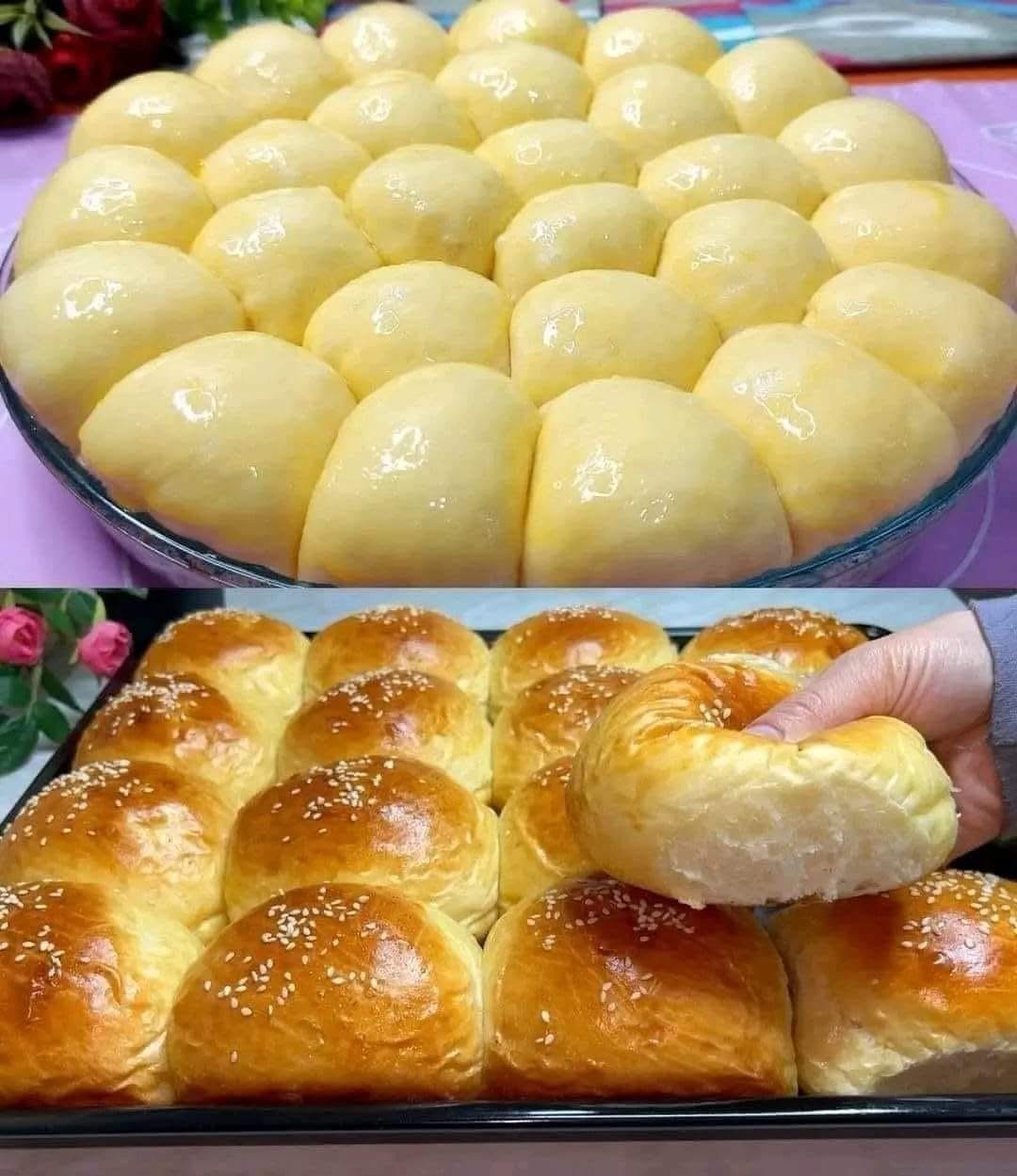Of course! Milk Brioche is a quintessential French enriched bread, known for its incredibly soft, tender, and slightly sweet crumb, and a beautiful, rich golden crust. It’s made with a generous amount of butter and eggs, with milk adding an extra layer of softness.
Here is a detailed, classic recipe for a gorgeous loaf of Milk Brioche.
Classic Milk Brioche (Loaf Version)
This recipe yields a wonderfully soft and plush bread perfect for French toast, bread pudding, or simply enjoying with a pat of butter.
Ingredients
· 3 ½ cups (440g) Bread Flour (All-Purpose flour can work, but bread flour gives a better structure)
· ⅓ cup (67g) Granulated Sugar
· 1 tsp (5g) Fine Sea Salt
· 2 ¼ tsp (7g) Instant Yeast (or 1 packet Active Dry Yeast – see note)
· ½ cup (120ml) Whole Milk, lukewarm
· 4 large Eggs, at room temperature
· 1 tsp Vanilla Extract (optional, but lovely)
· 1 cup (2 sticks / 226g) Unsalted Butter, softened but still cool, cubed
Equipment
· Stand Mixer with the dough hook attachment (highly recommended)
· 9×5 inch Loaf Pan
Instructions
Step 1: Make the Dough (The Key to Success!)
- Combine Dry Ingredients: In the bowl of your stand mixer, whisk together the flour, sugar, salt, and instant yeast.
- Combine Wet Ingredients: In a separate jug, whisk together the lukewarm milk, 3 of the eggs, and the vanilla extract.
- Mix: With the dough hook attached, start the mixer on low speed and gradually pour in the wet ingredients. Mix for 2-3 minutes until a shaggy dough forms.
- Knead: Increase the speed to medium and knead for 5-7 minutes. The dough will be sticky at first but should eventually start to slap against the sides of the bowl and become smoother.
Step 2: The Butter Incorporation (Be Patient!)
- Add Butter Gradually: With the mixer on medium-low speed, begin adding the softened butter, one cube at a time. Wait until each piece is almost fully incorporated before adding the next. This is the most critical step and can take 8-10 minutes. The dough will look greasy and may even fall apart, but have faith!
- Windowpane Test: Once all the butter is added, increase the speed to medium-high and knead for another 5-10 minutes. The dough is ready when it is very smooth, elastic, and pulls away from the sides of the bowl. To test, take a small piece and gently stretch it between your fingers. It should stretch thin enough to be translucent without tearing (the “windowpane test”).
Step 3: First Rise (Cold Fermentation for Flavor)
- First Proof: Lightly oil a large bowl. Place the dough in the bowl, turn it over to coat, and cover tightly with plastic wrap.
- Let it Rise: You have two options here:
· Preferred Method (Cold Rise): Place the bowl in the refrigerator and let it rise slowly for 6-12 hours, or overnight. This develops superior flavor and makes the rich dough easier to handle.
· Quick Method (Warm Rise): Let it rise in a warm place for 1-2 hours, or until doubled in size.
Step 4: Shape the Loaf
- Prepare Pan: Grease a 9×5 inch loaf pan generously with butter.
- Punch & Divide: Turn the cold dough out onto a lightly floured surface. Gently punch it down. Divide it into 8 equal pieces.
- Shape: Roll each piece into a smooth, tight ball.
- Arrange: Place the 8 balls of dough in two rows down the length of the prepared loaf pan.
Step 5: Second Rise
- Cover: Loosely cover the pan with plastic wrap or a clean kitchen towel.
- Let it Rise: Let it rise in a warm place for 1.5 to 2.5 hours, until the dough has puffed up and is nearly reaching the top of the pan.
Step 6: Bake to Golden Perfection
- Preheat: About 30 minutes before baking, preheat your oven to 350°F (175°C).
- Egg Wash: In a small bowl, whisk the remaining 1 egg with a teaspoon of water or milk. Gently brush the entire surface of the risen loaf with this egg wash. This gives it that classic, shiny, dark golden crust.
- Bake: Bake for 35-45 minutes, or until the top is a deep golden brown and the internal temperature registers 190°F (88°C) on an instant-read thermometer.
- Cool: Remove the brioche from the oven and let it cool in the pan for 10 minutes. Then, transfer it to a wire rack to cool completely before slicing. Resist the urge to cut into it while it’s hot, as the interior is still setting!
Crucial Tips for Success
· Temperature is Everything: Your ingredients (especially eggs and butter) should be at room temperature to emulsify properly into the dough. If the butter is too warm, it will make the dough greasy.
· Patience with the Butter: Adding the butter slowly is non-negotiable. Rushing this step will result in a greasy, separated dough.
· The Cold Rise is Best: The overnight refrigerator rise is highly recommended. It makes the dough less sticky to handle and profoundly improves the flavor.
· Don’t Underbake: Because it’s so rich, brioche can seem done before it is. Using a thermometer is the best way to ensure it’s perfectly baked.
· Storage: Store cooled brioche in an airtight bag at room temperature for 2-3 days. For longer storage, it freezes beautifully for up to 3 months.
Enjoy the process and the incredible results of your homemade, bakery-quality Milk Brioche

